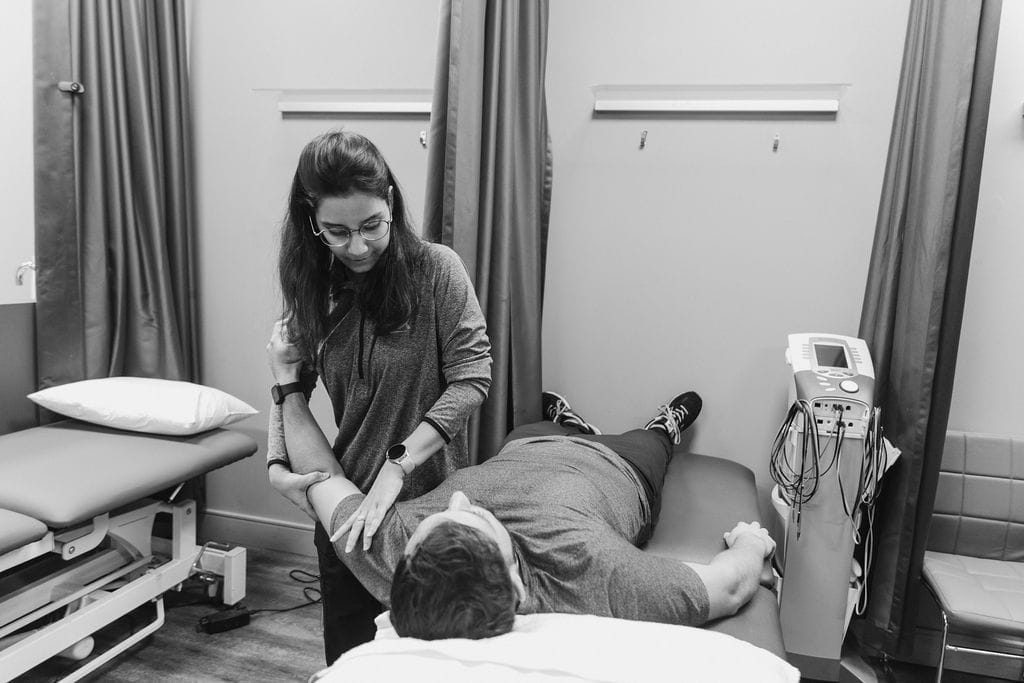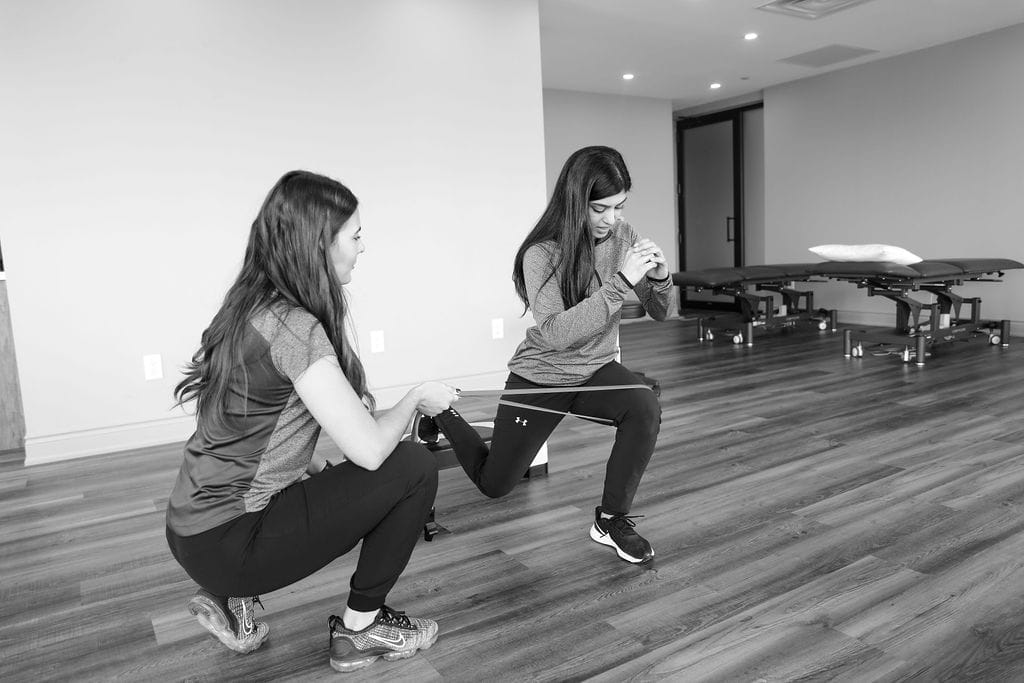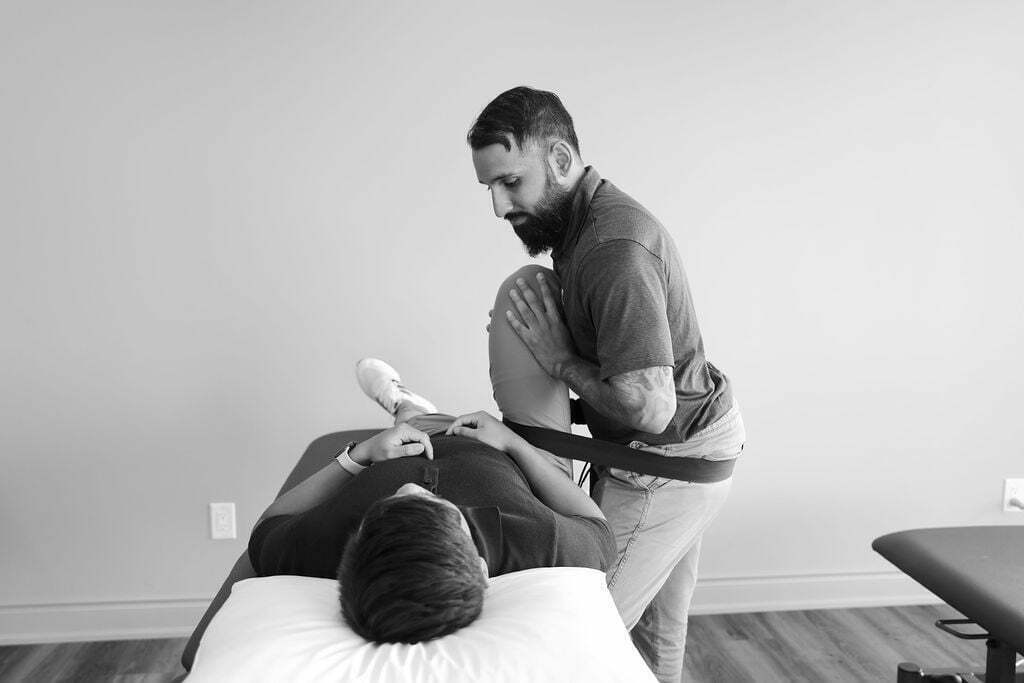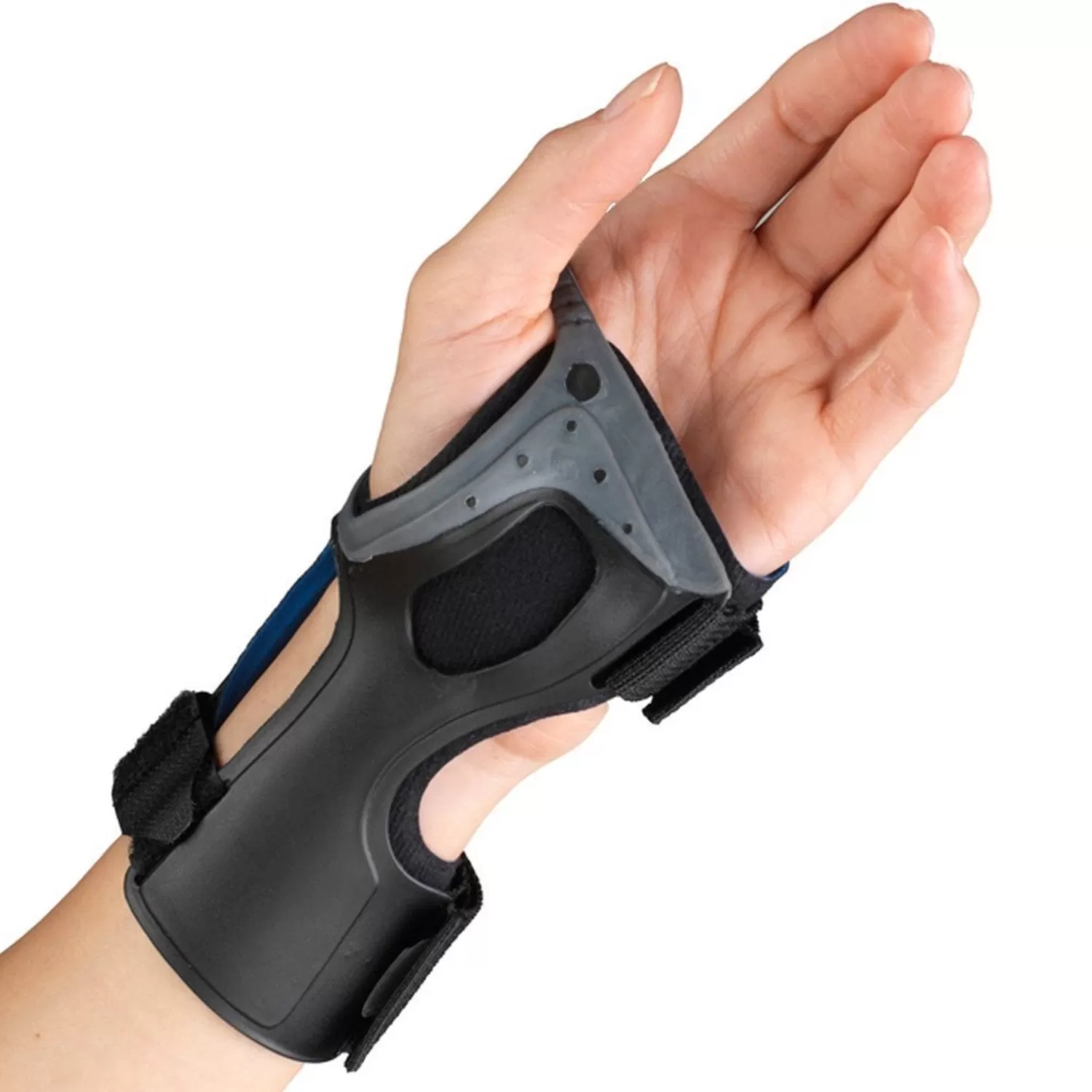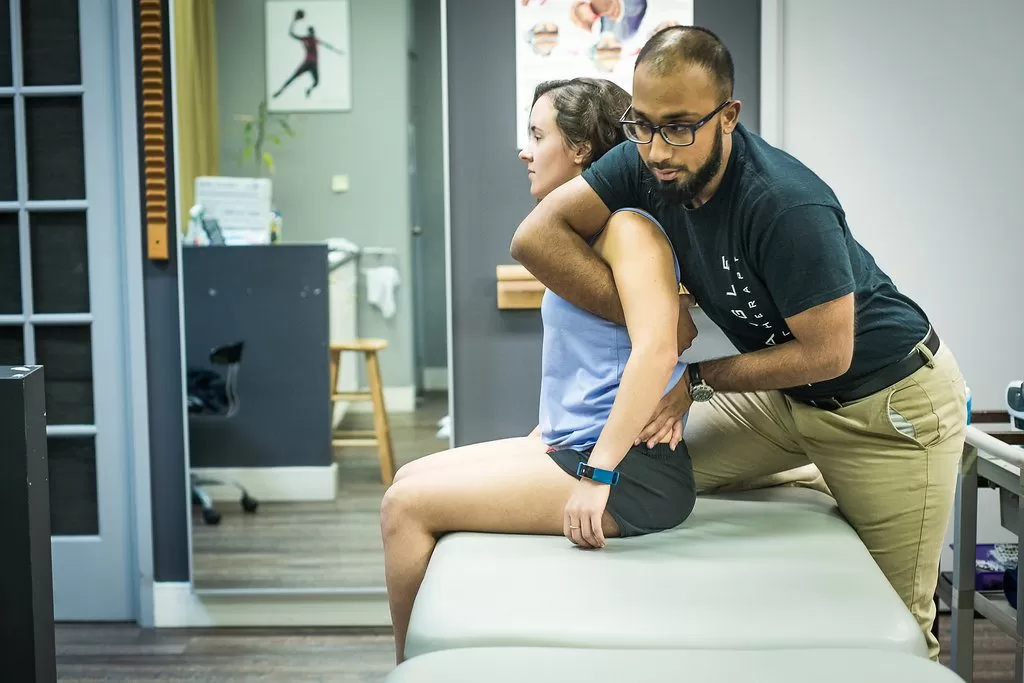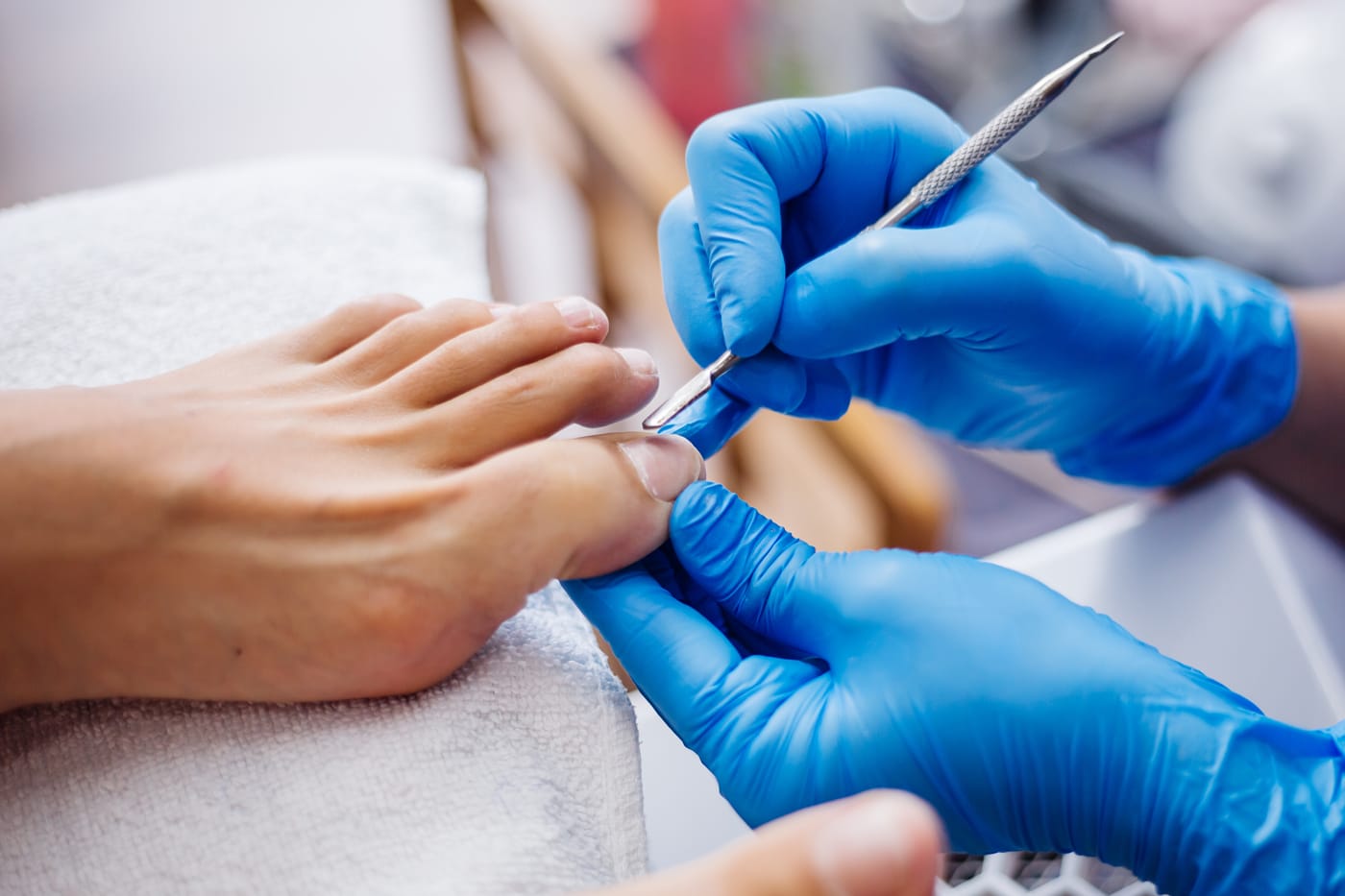Imagine you have the power to control your pain, and stiffness.You will not have to spend months in therapy. You will not need to buy or use expensive equipment. You will not have to rely on needles, injections or surgery.You will use your own skills and resources when you gain knowledge and guidance from a Certified McKenzie Provider.
What is the McKenzie method?
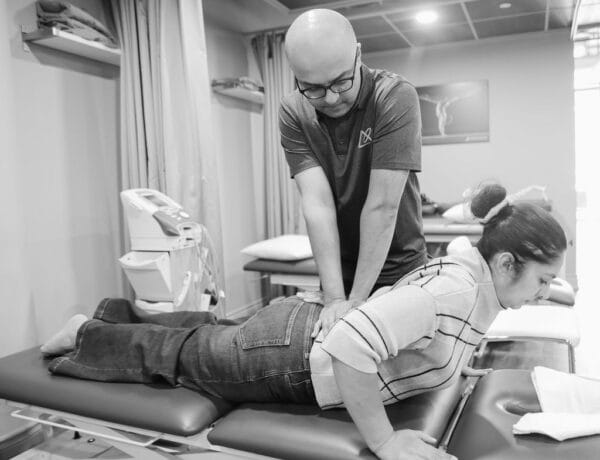
The Mckenzie method utilizes repeated movements for assessment , diagnosis and treatment. It is a comprehensive and clinically reasoned evaluation of patients where the emphasis is on patient independence , avoidance of therapist dependency, and use of minimal intervention.
Also read, Best Physiotherapy Clinic in Etobicoke
What lower back problems can we treat with Mckenzie?
Developed by world-renowned expert physiotherapist Robin McKenzie in the 1950s, this well-researched MDT is a reliable assessment process intended for all musculoskeletal problems, including pain in the back, as well as issues associated with sciatica, sacroiliac joint pain, arthritis, degenerative disc disease, muscle spasms and intermittent numbness in feet. If you are suffering from any such issues, then a MDT assessment may be right for you!
How does it work?
Most musculoskeletal pain is “mechanical” in origin, which means it is not due to a serious pathology like cancer or infection but a result of abnormal forces or mechanics occurring in the tissue. Further, it means that a position, movement or activity caused the pain to start. If a mechanical force caused the problem then it is logical that a mechanical force may be part of the solution. The MDT system is designed to identify the mechanical problem and develop a plan to improve it. In the simplest and most common instance, this may mean that moving in one direction may provoke and worsen the pain, and moving in the opposite direction may eliminate the pain and restore function.
Also Read, Best Clinic for Physiotherapy in Oakville
Assessment, treatment and prevention.
The McKenzie assessment process begins with the trained clinician taking a detailed history about your symptoms and how they behave. This enables the clinician to identify specific pain patterns, which then helps the clinician develop a treatment plan specific to your pattern of presentation. The clinician will prescribe specific exercises and advice regarding appropriate postures and ergonomics.If your problem has a more difficult mechanical presentation, a certified McKenzie clinician can provide advanced hands-on techniques to help manage the problem until you can self-manage.The aim is to be as effective as possible in the least number of treatment sessions. By learning how to self-treat your current problem, you gain hands-on knowledge to minimize the risk of recurrence and rapidly deal with symptoms if they recur putting you in control safely and effectively. The chances of problems persisting can more likely be prevented through self-maintenance.
Take control of your pain, empower yourself and get back to the life you love with the McKenzie Method of Mechanical Diagnosis and Therapy.
Book an appointment with our McKenzie Certified Physiotherapist, Ankit Doshi, BPT, MClSc (Adv Healthcare Practice), FCAMPT, CGIMS, Cert. MDT
Related Tags : Physiotherapy Toronto, physiotherapy Oakville, physiotherapist Toronto, physiotherapist North york, physiotherapists Toronto, physiotherapists Oakville, physiotherapy exercise Toronto, physiotherapy exercise Oakville
The McKenzie Method is a proven approach for managing low back pain through specific exercises and posture correction. If you are seeking professional physiotherapy to help with back pain, there are excellent clinics in physiotherapy Etobicoke, Oakville, North York, Toronto, Lawrence Park, Queens Quay, Erin Mills, Mississauga, and Liberty Village. These clinics provide personalized care and expert guidance to help you manage pain and improve your quality of life.
Shoulder Prehabilitation (prehab) involves the process of implementing a physical, psychological, nutritional intervention before an individual goes into surgery. The goal behind prehab programs is to maximize an individual’s physical and psychological fitness/health before surgery in order to reduce pain, increase physical function and allow you to return to your normal activities sooner following surgery.
Although there is limited evidence regarding shoulder prehab programs, there is promising and growing evidence that suggests prehab programs for hip, knee, and spinal surgery may improve pain, function and reduce the total cost of healthcare spending in the post-operative period.
Also Read, Physiotherapy Clinics in Etobicoke
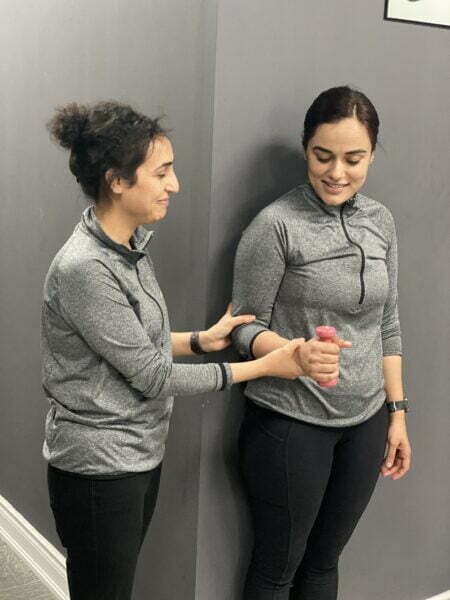
Types of Surgeries for Shoulder
- Reverse arthroplasty
- Total shoulder arthroplasty/replacement
- Rotator cuff repair
- SLAP repair
- Bicep tendon repair
- Tenotomy
What Prehab Programs look like:
Most prehab programs can be anywhere from 2-8 weeks leading up to surgery and could potentially involve:
1) Exercise training (2-3x/week)
- Strengthening and stabilization exercises for the rotator cuff and muscles supporting your shoulder blade
- Home exercise program tailored to your needs
- Exercise training 1 on 1 with a physical therapist
2) Education: information delivered regarding
- Shoulder anatomy and mechanics
- Pain science education
- The process of your operative procedure
- Patient-therapist expectations
- Post-operative protocol
- Detailed exercise program and technique
Also read, Best Physiotherapist near Mississauga
3) Nutritional support
- Consultation with a registered dietician
- Detailed nutrition programs to optimize physical and mental health
- Nutritional supplements as indicated
4) Psychological support
- Consultation with psychologist/ psychotherapist
- Anxiety and stress reduction
- Cognitive-behavioral therapy
- Relaxation techniques
- Coping strategies for surgery
Shoulder Prehab is a set of exercises and movements designed to strengthen and condition the shoulder joint and surrounding muscles, helping to prevent injury or improve recovery from a previous injury. Prehabilitation may include:
- Shoulder rotator cuff strengthening exercises such as internal and external rotation with light weights.
- Scapular stability exercises to improve posture and reduce stress on the shoulder joint.
- Stretching to improve flexibility and range of motion.
- Plyometric exercises to improve power and explosiveness.
- Core stability exercises to improve overall body control and stability.
Prehabilitation should be performed regularly, especially if you have a history of shoulder injuries or plan to participate in overhead activities such as weightlifting or throwing. By taking care of your shoulder before it becomes a problem, you can help prevent injury and improve your performance.
Click HERE to book an appointment with a physiotherapist at one of our eight locations.
- Physiotherapy Etobicoke – Triangle Physiotherapy Etobicoke
- Oakville Physiotherapy Clinic – Triangle Physiotherapy Oakville
- Physiotherapy North York – Triangle Physiotherapy North York
- Mississauga Physiotherapy Clinics – Triangle Physiotherapy Mississauga
- Downtown Physiotherapy Clinics – Triangle Physiotherapy King West
- Uptown Physiotherapy Clinics – Triangle Physiotherapy Lawrence Park
- Physiotherapy Clinic Downtown Toronto – Triangle Physiotherapy Queens Quay
- Physiotherapy Clinics Mississauga – Triangle Physiotherapy Erin Mills
Shoulder prehabilitation is essential for preventing injuries and optimizing recovery, especially for those undergoing surgery or managing shoulder pain. If you’re looking for professional physiotherapy services for shoulder prehabilitation, there are several clinics in physiotherapy Etobicoke, Oakville, North York, Toronto, Lawrence Park, Queens Quay, Erin Mills, Mississauga, and Liberty Village. These locations offer specialized care to help you strengthen your shoulders and maintain overall joint health.
Osteoarthritis (OA) is caused by the wear and tear of the cartilage and can affect all joints in the body. The most commonly affected areas are the knees, hips, low back, neck, and the digits of the hands and feet. Osteoarthritis affects 3.3%-3.6% of the population globally. The risk factors for osteoarthritis include age, gender, weight, anatomy, and history of trauma. The severity of osteoarthritis can be evaluated through medical imaging.
The following are characteristics and clinical presentation of OA:
- Use-related pain
- Stiffness
- Crepitus
- Decrease range of motion and flexibility
- Instability, Weakness
- Deformity
- Swelling
- Local

Also read, Best Physiotherapy Clinic in Mississuaga
OA can be managed conservatively through physiotherapy or chiropractic interventions. Pharmacological or surgical intervention may also be of benefit depending on the severity of the joint. Assistive devices can aid in offloading the damaged joint. Physiotherapy and chiropractic treatment for osteoarthritis focuses on reducing pain and increasing physical function through education and exercises. An individualized exercise program consisting of stretching and strengthening the muscles surrounding the affected joint will improve the well-being of the individual.
Tell me more about the GLA:D™ for knee and hip osteoarthritis.
- Good Life with osteoArthritis in Denmark (GLA:D™), developed in Denmark, is an education and tailored neuromuscular exercise program designed for individuals with hip or knee osteoarthritis
- The program is unique because it provides education and targeted exercise that can be applied to movement in everyday activities
- The program is suitable for individuals with early to late stages of OA
The following are the benefits of an individualized exercise program:
- Decrease pain and stiffness
- Increase mobility and function
- Improve muscles length and elasticity
- Improve cartilage
- Reduce risk of injury
- Delay surgical intervention
A physiotherapist and chiropractor can help identify the main issues affecting an osteoarthritic joint and create a treatment program based on your needs and goals.
Contact us today if you would like to see one of our physiotherapists or chiropractors to help you manage your osteoarthritis & relieve your pain.
Click HERE to book an appointment with a physiotherapist at one of our eight locations.
- Physiotherapy Etobicoke – Triangle Physiotherapy Etobicoke
- Oakville Physiotherapy Clinic – Triangle Physiotherapy Oakville
- Physiotherapy North York – Triangle Physiotherapy North York
- Mississauga Physiotherapy Clinics – Triangle Physiotherapy Mississauga
- Downtown Physiotherapy Clinics – Triangle Physiotherapy King West
- Uptown Physiotherapy Clinics – Triangle Physiotherapy Lawrence Park
- Physiotherapy Clinic Downtown Toronto – Triangle Physiotherapy Queens Quay
- Physiotherapy Clinics Mississauga – Triangle Physiotherapy Erin Mills
Managing osteoarthritis effectively requires a comprehensive treatment approach, including physiotherapy to alleviate pain and improve mobility. If you’re looking for professional physiotherapy services to support your osteoarthritis management, clinics in physiotherapy Etobicoke, Oakville, North York, Toronto, Lawrence Park, Queens Quay, Erin Mills, Mississauga, and Liberty Village offer expert care and personalized treatment plans to help you achieve better joint health and quality of life.
Knee ligament injuries are quite common, and they can occur at any age. These injuries can be caused by a variety of factors, such as sports injuries, accidents, or falls. Knee ligaments connect the bones in the knee, and when they are injured, they can cause severe pain, swelling, and instability in the joint.
Anatomy of the Knee
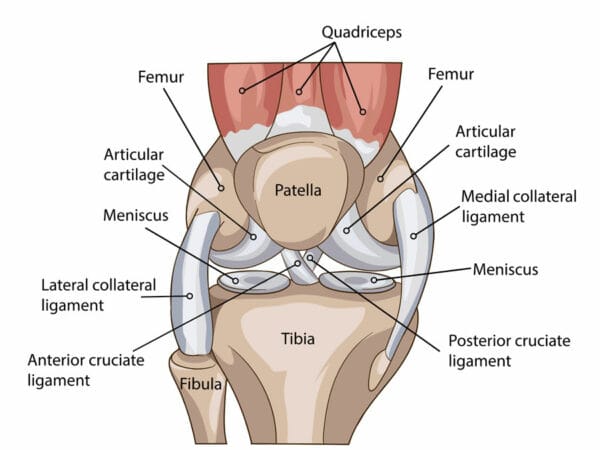
There are four primary ligaments in the knee, and they are the anterior cruciate ligament (ACL), the posterior cruciate ligament (PCL), the medial collateral ligament (MCL), and the lateral collateral ligament (LCL). Each of these ligaments serves a vital function in the knee joint, and an injury to any one of them can cause significant problems.ACL injuries are common in sports that require sudden stops and starts, such as football, basketball, and soccer. A sudden change in direction or a twisting motion can cause the ACL to tear or sprain. Symptoms of an ACL injury include a popping sound in the knee, severe pain, swelling, and difficulty walking or standing.
PCL injuries are less common than ACL injuries but can occur in the same types of sports. The PCL is located at the back of the knee and is responsible for stabilizing the knee joint. Symptoms of a PCL injury include pain, swelling, and instability in the knee joint.
MCL injuries are often caused by a direct impact to the outer side of the knee, such as during a tackle in football. Symptoms of an MCL injury include pain, swelling, and difficulty straightening the knee.LCL injuries are less common than MCL injuries but can occur in the same types of sports. The LCL is located on the outer side of the knee and is responsible for stabilizing the joint. Symptoms of an LCL injury include pain, swelling, and instability in the knee.
What is the best treatment for Knee ligament injuries?
Treatment for knee ligament injuries varies depending on the severity of the injury. In mild cases, rest, ice, compression, and elevation (RICE) may be all that is necessary to relieve pain and swelling. In more severe cases, surgery may be required to repair the damaged ligament.
Physical therapy is an essential component of treatment for knee ligament injuries. A physical therapist can help the patient regain strength, mobility, and flexibility in the knee joint. Exercises that focus on strengthening the muscles around the knee can help reduce the risk of future injuries.
How do I prevent knee injuries from recurring?
Preventing knee ligament injuries is also essential, especially for athletes who participate in high-impact sports. Wearing appropriate protective gear, such as knee pads, can help reduce the risk of injury. Stretching before and after exercise can also help prevent injuries.
In conclusion, knee ligament injuries can be a significant source of pain and disability. It is essential to seek prompt medical attention if you suspect you have a knee ligament injury. With the right treatment and rehabilitation, most people can recover from these injuries and return to their normal activities. Preventing knee ligament injuries is also crucial, and taking appropriate precautions can help reduce the risk of injury.
Book an appointment to see one of our physiotherapists to get that knee injury treated.
Recovering from knee ligament injuries requires proper physiotherapy to restore strength, stability, and function. For those seeking professional care, there are numerous physiotherapy clinics in physiotherapy Etobicoke, Oakville, North York, Toronto, Lawrence Park, Queens Quay, Erin Mills, Mississauga, and Liberty Village. These clinics provide expert physiotherapy services and personalized rehabilitation programs to help you recover effectively and return to your active lifestyle.
Knee pain is a very common complaint. It is something that can originate from many different structures in and around the knee. The knee joint is made up of the interaction between the femur (thigh), the tibia (shin), and the patella (kneecap). All the tissues around these areas can be contributing to your knee pain.
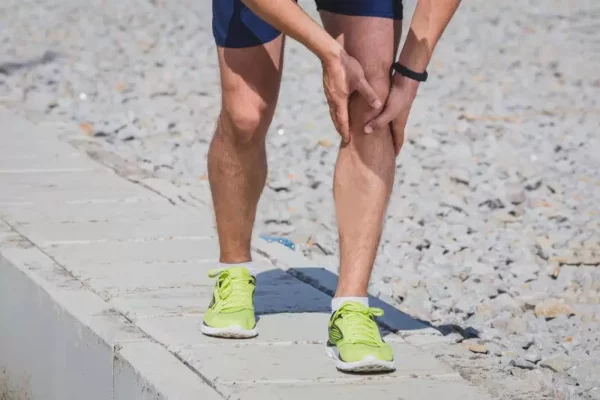
Common structures that can be contributing to your knee pain include but are not limited to: Ligamentous support around the knee (ACL, PCL, MCL, LCL), Meniscus Patellar Surfaces, Bursa Patellar or Quadriceps tendon. Pain in the knee could also be referral from other structures in the body such as the low back, or soft tissues further up or down the kinetic chain. Because of this, it is important to speak to a knowledgeable physiotherapist or chiropractor who can provide a detailed assessment.

People with knee pain commonly complain of inability to perform physical activity, pain when walking, standing, going up or down stairs, along with stiffness and lack of range of motion. A lot of these people are able to return to previous levels of physical function with a graded rehab program provided by a skilled practitioner. With a proper program, they are able to exceed their prior levels of function.
Physiotherapists are trained to assess, diagnose and treat musculoskeletal conditions, including knee pain. They use a variety of techniques and exercises to help alleviate pain, improve function, and prevent further injury. Some common techniques used by physiotherapists for knee pain include manual therapy, stretching and strengthening exercises, taping, and the use of modalities such as heat, cold, and electrical stimulation. Additionally, physiotherapists may provide education on proper body mechanics, ergonomics, and lifestyle modifications to help prevent future injury.
If you are struggling with knee pain, be sure to seek out a physiotherapist or certified FRC practitioner who can help you reach your physical activity goals.
Femoroacetabular impingement (FAI) is a condition in which structural abnormalities develop on the bones of the hip, resulting in premature contact (impingement) during movement. The hip is a ball and socket joint. The “ball” is the rounded top of the femur or thigh bone, and the “socket” is the concave portion of the pelvis called the acetabulum. When abnormal bone growth forms on the femoral head, it is called CAM impingement, and when on the acetabulum, it is called pincer impingement.
Like other joints, the surfaces of these bones are covered by articular cartilage which creates a smooth, low friction surface that helps the bones glide across each other during movement. The acetabulum has an an additional ring of fibrous cartilage called the labrum, that helps deepen and strengthen the joint. The excessive contact caused by the bony growths can damage the cartilage and labrum, resulting in pain.
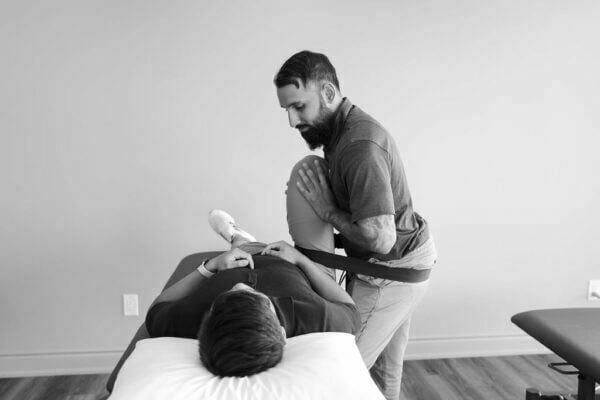
The pain associated with FAI is usually insidious and develops gradually over time. It is more common in young and middle-aged adults, especially those with exposure to repetitive and often high impact sports at a young age.
Symptoms of FAI
FAI symptoms commonly include some of the following:
- chronic, deep, or aching anterior groin pain
- motion or position related pain in hip or groin
- clicking, catching, or giving way in hip
- restricted range of motion
- pain may also be felt in back, buttock or thigh
FAI can occur bilaterally, and severity of symptoms do not necessarily correlate with more tissue damage. A thorough evaluation by a Physiotherapist is recommended to assess signs and symptoms, activity history and a physical examination to look for alternate causes of anterior groin pain. If FAI is suspected, a radiograph can be done to confirm the diagnosis.
FAI can be managed conservatively with modification of activities and physiotherapy treatment, taking into account unique patient goals, symptom severity and the impact on daily living.
If you think you might have Femoral Acetabular Impingement, contact us to book an appointment with one of our Physiotherapists today!
Griffin, D. R., et al. "The Warwick Agreement on femoroacetabular impingement syndrome (FAI syndrome): an international consensus statement." British journal of sports medicine 50.19 (2016): 1169-1176.
Palmer, Antony JR, et al. "Arthroscopic hip surgery compared with physiotherapy and activity modification for the treatment of symptomatic femoroacetabular impingement: multicentre randomised controlled trial." bmj 364 (2019).
Re: Kevin Durant’s mid-game calf strain
Kevin Durant, Durantula, easymoneysniper, whatever you want to call him is a superstar basketball player and is regarded by many as the second-best basketball player in the world. Unless you have been living under a rock in Toronto, you should know his name and the impact of his eventual return to the NBA Finals. Moreover, if you’re a therapist like me, you may feel disgusted about the mismanagement of his return to the court on Monday.
Here are the facts:
- Kevin Durant was diagnosed with a right calf strain on May 8th, 2019, which many suspected was an Achilles strain to begin with. Grade 1 Calf Strain can take anywhere from 7-10 days to resolve. Durant was out for a whole month!
- Kevin Durant was cleared for practice on June 9th and he did so with his teammates (unsure of the extent of this practice as it was closed off to the media)
- After his practice, Kevin Durant is noted leaving practice with a slight limp and ice on his right Achilles (to help with possible pain/inflammation?)
- A few hours before tip off he is upgraded to questionable to play in game 5 of the NBA finals, and 90 minutes before tip off it is known that he is cleared to play and will start in game 5, with no minutes restriction. WHAT?
- Kevin Durant does indeed start game 5, and starts off hot connecting on his first 3 attempts beyond the arc and scoring 11 points in the first quarter.
- At 9:46 of the second quarter, Durant came up the court and tried to accelerate past Ibaka with his right foot planted, and that was enough. Durant fell to the ground holding his right Achilles.
- Teammates and opposing players help him back to the locker room, and post game Durant is seen leaving the Scotiabank Arena in a walking boot and crutches
- Durant is expected to fly to New York to have an MRI done, which many believe will confirm a right ruptured Achilles.
Also read, Physiotherapy Rehab Clinic in Mississuaga
What is an Achilles Tear/Rupture and what does it mean for Durant?
The Achilles tendon is the largest tendon in the body. It connects your calf muscles to your heel bone and is used when you walk, run, and jump.
Achilles tendon ruptures can occur spontaneously in individuals and one symptom many people display is the pop or gunshot sound of their Achilles tendon rupturing. If you look in the video above, you can notice the pop of the Achilles and the subsequent vibration of the calf muscles accordingly.
Detailed in an article by Physio Works it states:
Achilles Ruptures occur mostly in middle-aged men, most of whom play recreational sports Injury often occurs during recreational sports that require bursts of jumping, pivoting and running.
They can happen in these situations:
- You make a forceful push-off with your foot while your knee is straightened by the powerful thigh muscles. One example might be starting a foot race or jumping.
- You suddenly trip or stumble, and your foot is thrust in front to break a fall, forcefully overstretching the tendon.
- You fall from a significant height.
Also read, Physiotherapy Rehab Clinic in Etobicoke
The biggest risk factor for Achilles tendon rupture is tendon cell death which occurs as a result of poorly managed tendinopathy.
As noted in the bold statements, these are the exact scenarios which led to the possible tendon rupture for Kevin Durant, with strong emphasis on the second statement!
While we don’t know the extent of Kevin Durant’s Achilles tear, we can only speculate that it is a complete rupture and thus provide this comparative timeline on his return to that of another NBA player, Rudy Gay, who tore his Achilles in 2017 at the same age, and has the body frame similar to that of Durant.
If the MRI on Tuesday confirms a complete tear and Durant follows a similar timeline to that of Gay
- Durant will undergo surgery to repair the tendon
- He will be on crutches and in a boot for the next six weeks.
- He will start physical therapy in two weeks and formal rehabilitation at eight weeks post-surgery.
- >12 weeks post he can begin sport specific training
- Return to sport is anticipated in 6 months
Now if Kevin Durant is able to follow the same path as Rudy Gay, what are the implications to his career? He was a free agent this year hoping to be signed to a max contract with the team of his choosing as every team salivated at the idea of signing him (Brooklyn, Knicks to name a few). Will teams take that gamble anymore? It’s Kevin Durant, so I am sure they will. Yet, he may be forced to stay in Golden State another year as he returns to the court to prove that he isn’t damaged goods. Keep in mind, numerous athletes in the past were never the same after facing a similar injury. Kobe is one that comes to mind, and this ultimately led to his retirement. Currently we see the same with Durant’s teammate Demarcus Cousins who went from being an all-star to a bench caliber player. Moreover, Rudy gay was quoted as saying that it took him almost a full year and a half to feel 100% again. Which scenario will apply to Durant? How long, if ever, will it take for him to be truly 100% again, as he sits in the prime of his career? All valid questions probably going through Kevin Durant’s head as he awaits his MRI results on Tuesday.
Also read, Physiotherapy Rehab Clinic in Oakville
Moreover, as we await the results of the MRI, I also question the doctors, therapists, and ownership of the Golden State Warriors on making the decision for Kevin Durant to return to Game 5. I get that the athlete has the final say as to whether they want to play or not (Kawhi Leonard comes to mind here ironically), but considering the immense amount of pressure put on Durant to help the Warriors avoid upset, and amplify his legacy, one can only point the finger at the medical and management team for allowing him to go out there. He was clearly still nursing a calf strain (and/or possible grade 1 Achilles strain). He was clearly not pain-free, nor was he recovered from a metabolic and vascular standpoint in that calf to Achilles region. So, was the chance at a three-peat really worth risking the health and career of one of the best players in the league?
I guess now that we know the outcome of that decision, all members involved will have to carry that guilt. Just remember therapists, don’t lose your credibility as a health care practitioner with unrealistic outcomes for some championship trophy, financial gain, or anything to inflate your ego. Always do what you clinically know is right for your client, and PLEASE educate patients that no pain no gain is not a real motto.
Recovering from a calf strain or any sports injury requires proper physiotherapy to ensure safe and effective healing. If you’re looking for expert physiotherapy care, clinics in physiotherapy Etobicoke, Oakville, North York, Toronto, Lawrence Park, Queens Quay, Erin Mills, Mississauga, and Liberty Village offer specialized treatment plans to help athletes and individuals recover fully and prevent future injuries.
What is a Custom Molded Splint?
It is a hand-made brace which is usually made from a thermoplastic material and requires the skill of a therapist to measure, trace, and adjust in order to accurately fit their patient’s hand. Custom splinting is used to either immobilize or mobilize structures to promote healing or function.
How is a Custom Molded Splint made?
While the procedure itself is fairly straightforward, the making of the splint takes a lot of expertise and practice. A hard sheet of thermoplastic material is used to create a pattern that is perfectly molded to the patients’ hand. This template is then heated to over 160° in order to allow the temperature-sensitive material to become flexible. After it cools down, the material is placed and molded directly on the patient, providing a fit matching the curves and contours of the client’s hand. Splinting is a very effective way to facilitate a patient’s recovery for a variety of conditions.
Also read, Best Physiotherapy Clinic in Etobicoke
Custom Splints vs. Over-the-Counter Splints
Over-the-counter splints, which can be found at drugstores or online stores, are typically available in small, medium, and large sizes. They are not created to specifically match your hand and can be difficult to adjust. By investing in a custom splint that is made to fit your hand specifically, you will be more likely to use the splint and to achieve better clinical outcomes.
Benefits of Custom Molded Splints
A common group of diagnoses for which splinting is indicated includes: tennis elbow, golfer’s elbow, trigger finger, carpal tunnel syndrome, and many others. These types of conditions are caused by overuse of muscles that cross a specific joint or by compression caused by the joint itself. Wearing a splint prevents movement of the relevant joint which allows affected structures to rest, and along with a therapy program, can resolve symptoms. Splints that are specifically tailored to a patient’s functional limitations can make a difference in a person’s life by relieving pain, stabilizing joints, and protecting vulnerable tissues. This, in turn, promotes physical well-being.
Aslo read, Best Physiotherapy Clinic in Mississuaga
Additional benefits from splinting can be found in those with degenerative arthritis. Osteoarthritis often first manifests at the joint located at the base of the thumb, also known as the carpometacarpal (CMC) joint. The CMC is used excessively in our daily lives, especially for those that have occupations that require the forceful use of the thumb (like hand therapists). This joint can break down over time, leading to joint instability and pain. A custom splint provides the external support the thumb needs to compensate for the internal support the joint no longer provides. Patients often notice immediate pain relief with the use of a splint and, with accompanying education from the therapist, become more functional with daily activities.
Though splinting can be highly effective for a wide variety of conditions, it is only a supplement to treatment. Long-term splint usage is rarely indicated and should be discontinued based on healing and symptoms. Splint wear without a therapy program can lead to joint stiffness, weakness, and other problems. Splinting can prevent further injury, but does not repair the body. Splinting and a comprehensive therapy program work hand-in-glove to resolve the underlying pathology while preventing further structural damage. The art of Custom Splinting has changed drastically over the past several years. With advanced qualities of the thermoplastic material and splinting accessories, along with increased knowledge of biomechanics and theory, wrist and hand splinting has become an effective and important part of therapeutic treatment for upper extremity disorders.
For optimal recovery and support, custom splints and orthoses play a crucial role in managing injuries and conditions affecting the hand, elbow, and shoulder. If you require physiotherapy services to complement your treatment, clinics in physiotherapy Etobicoke, Oakville, North York, Toronto, Lawrence Park, Queens Quay, Erin Mills, Mississauga, and Liberty Village offer expert care and personalized solutions to help you recover and maintain joint health.
Isn’t it so unfair?! Last night you were all fine before going to bed but the next morning you woke up with a sore shoulder. The uninvited shoulder pain makes you continuously look back and think of how you might have injured it. Maybe it was an intense dance lesson from last week, a strenuous workout, or even sleeping incorrectly. Not being able to figure it out, you carry on with your day, all the while noticing that something is feeling off.
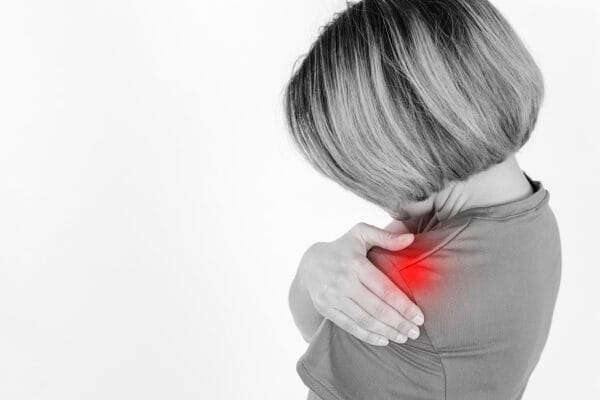
Also read, Best Physiotherapy Clinic in Etobicoke
Below are a few common reasons that can cause “random” shoulder pain:
- Thoracic Spine Stiffness: The stiffness in the thoracic spine is mainly caused by lack of movement or prolonged sitting, which is more likely to happen since more people are having sedentary jobs. In such cases, we tend to round our shoulders more which eventually puts too much stress on underlying structures.
- Frozen Shoulder: A condition which causes a significant amount of scar tissue to be deposited all around the shoulder capsule, causing a noticeable range of motion restrictions, strength loss, and pain.
- Rotator Cuff Tendonitis: This usually occurs when the rotator cuff tendons in the shoulder are overworked or strained because of an injury. You might even hear a snapping sound when you move your shoulder. Exerting pressure on the shoulder, sleeping incorrectly, and poor shoulder mechanics are some of the causes of this condition.
- Shoulder Impingement: Sleeping on one arm can result in shoulder impingement. Shoulder impingement can also be caused due to excessive shoulder movements, ligament laxity, muscular weakness around the joint, poor posture, previous injury, etc.
- Scapular Dyskinesis: Also known as Chicken wing shoulder blades, this condition causes you to have poor muscular control of your shoulder blades. There can be muscle pain or joint pain around the scapula when carrying heavy objects.
- Referred Pain: Many people come to our physiotherapy clinics complaining about their shoulder pain, but after a thorough examination we realize that the pain is referred from their neck. It is important to see a Physiotherapist that understands this link and treats the right thing!
Also read, Physiotherapy Rehab Clinic in Oakville
How can I get relief from shoulder pain?
A few simple solutions which will give you some relief are:
- Avoid intense activities
- Maintain a proper posture
- Don’t sleep with your elbow over your head; this can compress the tendons of the shoulder and increase your pain
At Triangle Physiotherapy, will assess your shoulder and create a comprehensive treatment plan for you. Our treatment will involve a combination of hands-on manual therapy techniques as well as a custom exercise plan to help you on your road to recovery. Book your appointment now and stop letting your shoulder prevent you from doing the things you want to do!
Waking up with a sore shoulder can significantly affect your daily life, and physiotherapy can provide effective solutions to alleviate pain and improve mobility. If you’re looking for professional physiotherapy care, there are excellent clinics in physiotherapy Etobicoke, Oakville, North York, Toronto, Lawrence Park, Queens Quay, Erin Mills, Mississauga, and Liberty Village. These clinics offer specialized treatment plans to help you manage shoulder pain and enhance your overall well-being.
Who is a Podiatrist? A podiatrist deals with the assessment, diagnosis and treatment of the lower limbs and feet. What is a Chiropodist? A chiropodist deals with the assessment, diagnosis and treatment of the lower limbs and feet. Sound familiar? That is because these two professions are one and the same!
While there may be differences in terms of scope of practice in other areas of the world, in Canada, both podiatrists and chiropodists are qualified to treat patients with arthritis, diabetes, lower limb sports injuries, and various other ailments of the feet. They have received specialized training which allows them to work with patients of all ages and to help the elderly stay mobile and independent. The only practical difference between the two professions, in terms of their scope of practice in Canada, is simply their title.
Also read, Physiotherapy Treatment Etobicoke
Chiropodists can advise patients on how to look after their feet and what type of shoes or orthotics to wear. They can also treat, alleviate and benefit day-to-day foot conditions, such as:
- Thickened, fungal, or ingrown toenails
- Varicose veins
- Athlete’s foot
- Smelly feet
- Dry and cracked heels
- Flat feet
- Bunions
- Heel pain
- Ageing feet
- Blisters
- Gout
- Sports Injuries
Also read, Oakville Physiotherapy Rehab Clinic
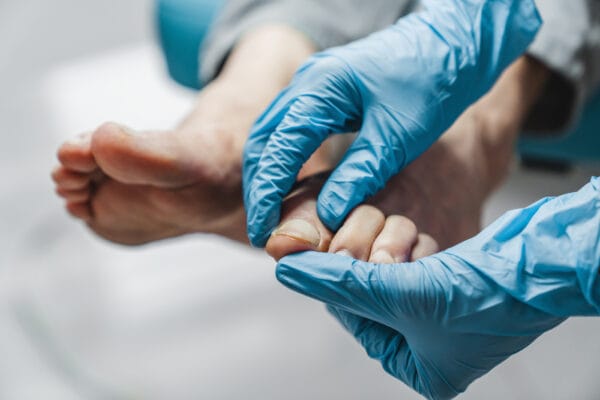
Seek help from a Chiropodist for advice or treatment if you have:
- Painful heels or arches
- Thickened or discoloured toenails
- Cracks, cuts, or hardened skin on your feet
- Growths, such as warts
- Scaling or peeling on the soles
- Any other foot condition
Don’t bury your head in the sand and ignore small foot problems! These small “problems” can quickly transform into major issues that can affect the quality of your life. As they say, “Prevention is the best cure“. Patients who make regular check-up appointments can avoid many potential foot problems as Chiropodists are specialists at recognizing problems before they have occurred.
Don’t let your feet problems keep you from stepping into our clinic! Seek the help of our foot specialists at any of our locations in Etobicoke, Oakville, North York, Mississauga & Toronto, and say goodbye to your foot dilemmas!
Addressing foot problems effectively often requires a comprehensive approach that includes professional physiotherapy. If you need expert care for foot-related issues, there are clinics in physiotherapy Etobicoke, Oakville, North York, Toronto, Lawrence Park, Queens Quay, Erin Mills, Mississauga, and Liberty Village. These locations provide specialized physiotherapy services and personalized treatment plans to help you get back on your feet and improve your overall mobility.


